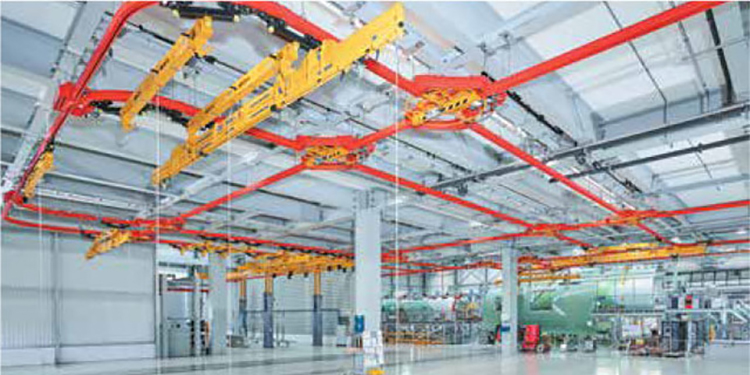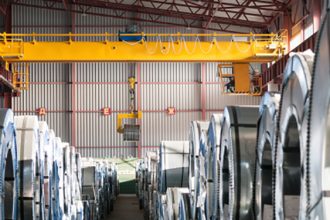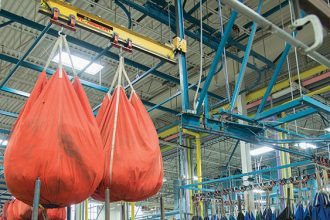How Overhead Lifting Solutions Improve Safety

Overhead lifting solutions — including cranes, hoists, monorails, and workstation cranes — not only improve the efficiency and productivity of an operation, they also offer significant workplace safety advantages. These benefits are outlined in a recent article in MHI Solutions magazine, with input contributed from the members of MHI’s Overhead Alliance, which is comprised of the Crane Manufacturers Association of America (CMAA), the Hoist Manufacturers Institute (HMI), and the Monorail Manufacturers Association (MMA).
Among the safety benefits discussed are:
- The restriction of load movement to a pre-defined work area. This enables the operator to maintain a safe distance from the load.
- The elimination of floor-based equipment for load movement. Because the load is lifted up and over obstacles, it is also kept out of the way of pedestrian traffic aisles, minimizing the risk of impacts.
- The ability to automate lifting and transport operations, eliminating risks to human operators.
- The opportunity to establish protected areas where no travel is permitted, including designated spaces for load pickup, placement and positioning.
- The support of social distancing mandates, as operators can work in areas away from colleagues to safeguard health and reduce the risk of airborne disease transmission.
- Improved ergonomics, as overhead lifting replaces manual handling of heavy loads as well as eases the strains associated with repetitive lifting of light loads.
- Better visibility of operators, who can position themselves at a vantage point that allows them to see both the load and other pedestrians without having to twist and turn — as they would if seated when operating floor-based transport equipment for load movement.
- Opportunities for government grants for companies who replace a manual process with overhead lifting equipment to help offset the cost of the investment.
- Potential insurance discounts for operations that install overhead lifting equipment to reduce the risk of worker injury.
Additionally, the article offers a series of key considerations for users deciding how best to integrate an overhead handling solution into their facility. These include answering the following questions:
- What will this overhead device be used for?
- Where will it be located?
- Will it be freestanding or mounted to the building structure?
- What is the required capacity, speed of lift and the distance of travel?
- What is the lifting height required?
- Are there any height restrictions?
To read the full article, click here.
Want to learn more about the other the advantages offered by overhead handling systems? MHI’s Overhead Alliance — comprised of the Crane Manufacturers Association of America (CMAA), the Hoist Manufacturers Institute (HMI), and the Monorail Manufacturers Association (MMA) — details 13 different ways these lifting solutions benefit facilities in the free publication, “Expand Your Possibilities. Discover the Potential. Choose Overhead Lifting.”



